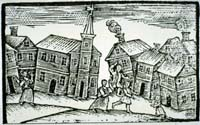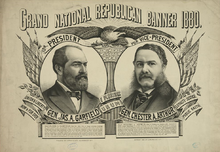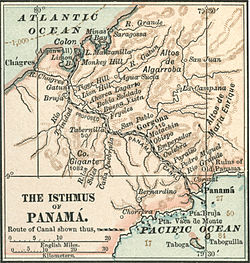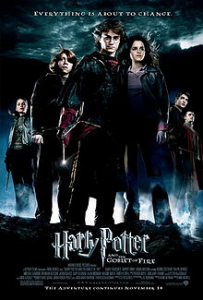November 18th Scots’ Book of Days – 1307 Swiss set “Anne of Geierstein” is an Sir Walter Scott to bring in Swiss patriot William Tell.
November 18 1307 The Swiss set “Anne of Geierstein” is an appropriate place for Sir Walter Scott to bring in Swiss patriot William Tell. November 18, 1307, is considered the date when William famously sent an arrow through an apple sitting atop his son’s head. ‘What tell ye us of the Duke?” answered Laurenz Neipperg, the same blue cavalier whom Arthur had seen at the secret rendezvous of the Balese youth, in company with Rudolph,—” Why talk ye of Burgundy to us, who are none of his subjects? The Emperor, our only rightful lord, had no title to pawn the town and fortifications of La Ferette, being as it is a dependency of Bale, to the prejudice of our free city. He might have pledged the revenue indeed, and supposing him to have done so, the debt has been paid twice over by the exactions levied by yonder oppressor, who has now received his due. But pass on, Landamman of Uuterwalden. If our actions displease you, abjure them at the footstool of the Duke of Burgundy; but, in doing so, abjure the memory of William Tell, and Staufbacher, of Furst, and Melchtal, the fathers of Swiss freedom.” William Tell and his brethren were men of years and judgment, husbands and fathers, having a right to be heard in council, and to be foremost in action.’ The Scottish Scott was a prominent 19th century author and Historian.
1647 Pierre Bayle (18 November 1647 – 28 December 1706) was a French philosopher and writer best known for his seminal work the Historical and Critical Dictionary, published beginning in 1695. After William Harris.
 1715 Earl of Mar had broken up from his quarters at Perth, and advanced to Auchterarder, Perth ad Kinross, where the infantry were quartered, [TG70-362]
1715 Earl of Mar had broken up from his quarters at Perth, and advanced to Auchterarder, Perth ad Kinross, where the infantry were quartered, [TG70-362]
Rail map showing Auchterarder, Perth ad Kinross, southwest of Perth. Auchterarder had 100 bridges.
1755 Cape Ann earthquake 09;11, Latitude 42.7 Longitude -70.2, Boston, Massachusetts, USA. At between 6.0 and 6.3 on the Richter scale (which would not be invented for hundreds of years in the future), it remains the largest earthquake in the history of Massachusetts. Sailors on a ship more than 200 miles (320 km) offshore felt the quake, and mistook it at first for their ship running aground. The earthquake took place on November 18, 1755, at approximately 4:30 AM. Its epicenter is believed to have been offshore, approximately 24 miles (39 km) east of Cape Ann. The quake was felt as far north as Halifax, Nova Scotia, south to the Chesapeake Bay and South Carolina, and from Lake George and Lake Champlain.
 An 18th century woodcut taken from a religious tract showing the effects of the Cape Ann earthquake. From 1,300 to 1,600 chimneys in the city were damaged in some way, the gable ends of some houses collapsed, and a number of roofs were damaged by falling chimneys. Doctrine and Covenants 88:89 For after your testimony cometh the testimony of earthquakes, that shall cause groanings in the midst of her, and men shall fall upon the ground and shall not be able to stand.
An 18th century woodcut taken from a religious tract showing the effects of the Cape Ann earthquake. From 1,300 to 1,600 chimneys in the city were damaged in some way, the gable ends of some houses collapsed, and a number of roofs were damaged by falling chimneys. Doctrine and Covenants 88:89 For after your testimony cometh the testimony of earthquakes, that shall cause groanings in the midst of her, and men shall fall upon the ground and shall not be able to stand.
‘Repent, repent ye, Hear the words of that God who made you, by the voice of earthquakes.’ Jesus Christ in Doctrine and Covenants section 43.
 1886 Chester A. Arthur (Scots descent) (October 5, 1829 – November 18, 1886) 21st President, 1881-85: His election was the start of a quarter-century in which the White House was occupied by men of Ulster-Scots origins. His family left Dreen, near Cullybackey, County Antrim, in 1815. There is now an interpretive centre, alongside the Arthur Ancestral Home, devoted to his life and times.
1886 Chester A. Arthur (Scots descent) (October 5, 1829 – November 18, 1886) 21st President, 1881-85: His election was the start of a quarter-century in which the White House was occupied by men of Ulster-Scots origins. His family left Dreen, near Cullybackey, County Antrim, in 1815. There is now an interpretive centre, alongside the Arthur Ancestral Home, devoted to his life and times.
 1903 – The Hay-Bunau-Varilla Treaty (clan Hay) is signed by the United States and Panama, giving the United States exclusive rights over the Panama Canal Zone, which were controlled until 1977, then 1999. Proposals for a canal across the Isthmus of Panama dated back to 1529, soon after the Spanish conquest. Álvaro de Saavedra Cerón, one of the lieutenants of conquistador Vasco Núñez de Balboa, suggested four possible routes, one of which closely tracks the present-day canal. Saavedra believed that such a canal would make it easier for European vessels to reach Asia. Although King Carlos I was enthusiastic, and ordered preliminary works started, his officials in Panama soon realized that such an undertaking was beyond 16th century technology. One official wrote to Carlos, “I pledge to Your Majesty that there is not a prince in the world with the power to accomplish this”. The Spanish instead built a road across the isthmus. The road came to be crucial to Spain’s economy as treasure obtained along the Pacific coast of South America was offloaded at Panama City and hauled through the jungle to the Atlantic port of Nombre de Dios (today Colón), and though additional canal building proposals were made throughout the 16th and 17th centuries, they came to naught. One effort by the Scots in 1699 and 1700 named Darien, failed, costing Scotland half its gross national product or capital .
1903 – The Hay-Bunau-Varilla Treaty (clan Hay) is signed by the United States and Panama, giving the United States exclusive rights over the Panama Canal Zone, which were controlled until 1977, then 1999. Proposals for a canal across the Isthmus of Panama dated back to 1529, soon after the Spanish conquest. Álvaro de Saavedra Cerón, one of the lieutenants of conquistador Vasco Núñez de Balboa, suggested four possible routes, one of which closely tracks the present-day canal. Saavedra believed that such a canal would make it easier for European vessels to reach Asia. Although King Carlos I was enthusiastic, and ordered preliminary works started, his officials in Panama soon realized that such an undertaking was beyond 16th century technology. One official wrote to Carlos, “I pledge to Your Majesty that there is not a prince in the world with the power to accomplish this”. The Spanish instead built a road across the isthmus. The road came to be crucial to Spain’s economy as treasure obtained along the Pacific coast of South America was offloaded at Panama City and hauled through the jungle to the Atlantic port of Nombre de Dios (today Colón), and though additional canal building proposals were made throughout the 16th and 17th centuries, they came to naught. One effort by the Scots in 1699 and 1700 named Darien, failed, costing Scotland half its gross national product or capital .
Map of the area before canal construction. Atlantic Ocean, Pacific Ocean.
 1916 – World War I: First Battle of the Somme – in France, British Expeditionary Force commander Douglas Haig calls off the battle which started on July 1, 1916. Field Marshal Douglas Haig, 1st Earl Haig, KT, GCB, OM, GCVO, KCIE, ADC (19 June 1861 – 29 January 1928) was born in Charlotte Square, Edinburgh. His father John Haig was (“in trade”), and as head of the family’s successful Haig & Haig whisky distillery had an income of £10,000 per year.
1916 – World War I: First Battle of the Somme – in France, British Expeditionary Force commander Douglas Haig calls off the battle which started on July 1, 1916. Field Marshal Douglas Haig, 1st Earl Haig, KT, GCB, OM, GCVO, KCIE, ADC (19 June 1861 – 29 January 1928) was born in Charlotte Square, Edinburgh. His father John Haig was (“in trade”), and as head of the family’s successful Haig & Haig whisky distillery had an income of £10,000 per year.
Haig clan. Crest: A rock Proper. Motto: TYDE WHAT MAY. Chief: George Alexander Eugene Douglas Haig, 2nd Earl Haig
1994 November 18. Howard W. Hunter (clan Hunter) presided over the inauguration of BYU—Hawaii’s 8th president. From 1965 to 1976, Elder Hunter’s organizational talents enabled the Polynesian Cultural Center, affiliated with the Church College of Hawaii (now Brigham Young University—Hawaii), to become a popular tourist attraction in Hawaii. Howard W. Hunter becomes 14th President of the Church of Jesus Christ of Latter Day Saints in 1994. The Hunters are from Paisley Renfrewshire Scotland. President Howard W. Hunter: The Lord’s “Good and Faithful Servant” Ensign Apr 1995.
 2005 Harry Potter and the Goblet of Fire filmed Glenfinnan Viaduct, Scotland (Viaduct used in the Hogwarts Express scenes). Hogwarts School of Witchcraft and Wizardry or simply Hogwarts, is a fictional school. Hogwarts school was voted as the 36th best Scottish educational establishment in a 2008 online ranking, outranking Edinburgh’s Loretto School. Hogwarts is in fictional Scotland, near Dufftown (Gaeli: Bcaile Bhainidh) a burgh in Banffshire, Scotland. Filming locations for the Hogwarts Express sequences include Goathland on the North Yorkshire Moors Railway, Kings Cross railway station and the route of the Jacobite Express which follows the West Highland Line from Fort William to Mallaig in Scotland, as it crosses the Glenfinnan Viaduct.
2005 Harry Potter and the Goblet of Fire filmed Glenfinnan Viaduct, Scotland (Viaduct used in the Hogwarts Express scenes). Hogwarts School of Witchcraft and Wizardry or simply Hogwarts, is a fictional school. Hogwarts school was voted as the 36th best Scottish educational establishment in a 2008 online ranking, outranking Edinburgh’s Loretto School. Hogwarts is in fictional Scotland, near Dufftown (Gaeli: Bcaile Bhainidh) a burgh in Banffshire, Scotland. Filming locations for the Hogwarts Express sequences include Goathland on the North Yorkshire Moors Railway, Kings Cross railway station and the route of the Jacobite Express which follows the West Highland Line from Fort William to Mallaig in Scotland, as it crosses the Glenfinnan Viaduct.
Poster.
Disclaimer: The author of each article published on this web site owns his or her own words. The opinions, beliefs and viewpoints expressed by the various authors and forum participants on this site do not necessarily reflect the opinions, beliefs and viewpoints of Utah Standard News or official policies of the USN and may actually reflect positions that USN actively opposes. No claim in public domain or fair use. © John Choate
Utah Standard News depends on the support of readers like you.
Good Journalism requires time, expertise, passion and money. We know you appreciate the coverage here. Please help us to continue as an alternative news website by becoming a subscriber or making a donation. To learn more about our subscription options or make a donation, click here.
To Advertise on UtahStandardNews.com, please contact us at: ed@utahstandardnews.com.


Comments - No Responses to “November 18th Scots’ Book of Days – 1307 Swiss set “Anne of Geierstein” is an Sir Walter Scott to bring in Swiss patriot William Tell.”
Sure is empty down here...